
FAO Regional Office for Asia and The Pacific, Bangkok

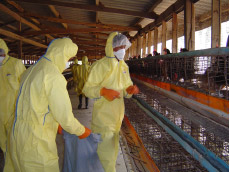

1. Spread of HPAI
2. HPAI Update
3. FAO Response
4. Recommended
National Actions


- Exposure to migratory waterfowl
- International movement of poultry, equipment and people
- Direct contact
- Spread by manure, equipment, vehicles, egg flats, crates, and people whose clothing or shoes have come in contact with the virus
- HPAI viruses remain viable at moderate temperatures for long periods and can survive indefinitely in frozen material
- WHO studies: H5N1 viruses from 2004 survived at 37 oC for 6 days compared with 2 days for viruses from the 1997 outbreak
- Initial studies support asymptomatic infection in ducks in Asia, further research is needed
2. HPAI Update
Scope of the Crisis
- >100 m birds culled (1st wave)
- 32 human deaths, including 20/27 cases in Viet Nam and 12/17 cases in Thailand
- Isolation of H5N1 viruses from pigs sampled in China in 2001 & 2003
- The death/culling of 147/441 tigers in Thailand (Oct/Nov)
- Detection of H5N1 in wild birds in Russia and Hong Kong.
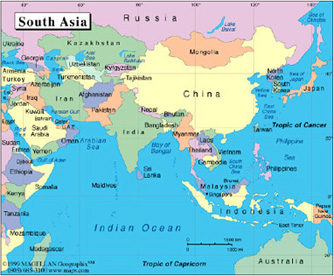
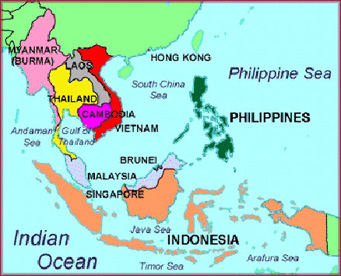
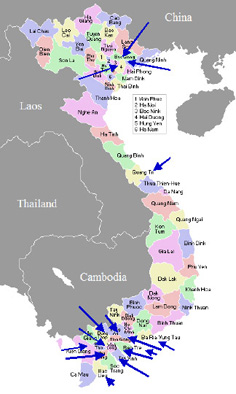
First official report: Jan. 8, 2004
57 of 64 provinces affected
Destroyed 44 m chickens
March 2004 - declared under control
July, 2004 - second wave of outbreaks
As of October 2004
15 provinces, all in the south
human deaths
____________________________
Virus type H5N1
Animal affected: chicken, duck, quail,
muscovy duck
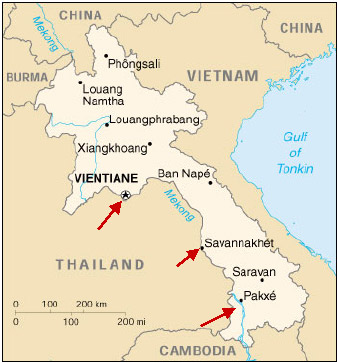
14 January 2004
First suspect case in Xaythani District,
Vientiane Capital
March 2004
Confirmed outbreaks in 45 places
38 in Vientiane capital,
5 in Savannakhet, 2 in Champasak
____________________________
Resulted in 50,670 deaths, slaughter of
100,250 birds
H5 confirmed 23 January
N1 confirmed 21 February
Animal affected: chicken, duck quail
24 January 2004
First case of H5N1
Mortality event began on 24 Dec '03
but DAHP was notified only on 12 Jan
15 December 2003
First mortality case (serpent eagle)
of H5N1 at the Tamao Wildlife
Rescue Center
January - April
Kandal (3), Siem Riep (3)
Phnom Penh (2), Takeo (3)
Kampong Cham (1)
19 September 2004
Kandal ? 1 farm
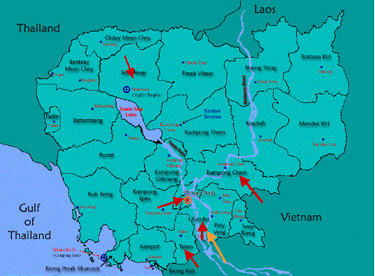
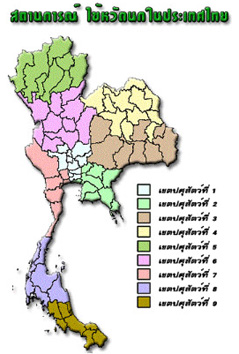
First case reported on 23 January 2004
Confirmed H5N1
Animals affected: chicken, duck, quail, goose,
turkey, stork, cat, tiger
Human deaths: 8
__________________________________
3 July 2004 "second wave"
Confirmed in 43 provinces but put under control
Human Deaths

AI Monitoring commenced in March 2004
Results indicated persistence of AI virus serotype H7N3 (LPAI) and H9N2 (HPAI) in broilers and layers in Karachi, Punjab

First official report-25 January 2004
Virus type: H5N1
No human case
Current status: 14/33 provinces
affected covering 95 districts
(13/7/04)
Control Measures:
Vaccination Campaign launched in
affected and threatened areas
Selective stamping out and animal
movement control
First official report-27 January 2004
Outbreaks in 16 provinces
143,100 poultry has disease
127,600 poultry died
9 million slaughtered
No new outbreaks to date
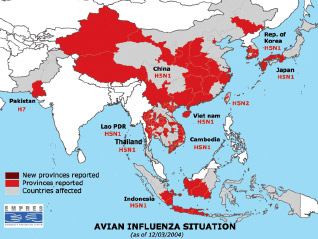
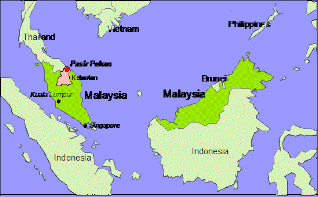
First report-17 August 2004
Stamping out
State of Kelantan - under quarantine